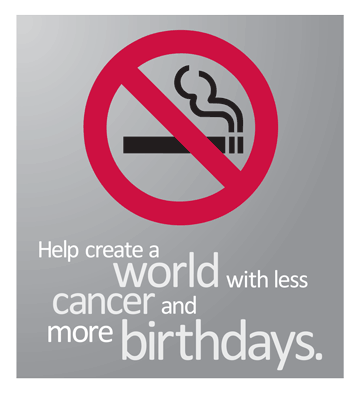
Since 1977, the third Thursday of November has designated the American Cancer Society Great American Smokeout. The day is to encourage smokers to use the date to plan to quit. “By quitting — even for one day — smokers will be taking an important step towards a healthier life – one that can lead to reducing cancer risk.”
According to the CDC, cigarette smoking is responsible for more than 480,000 deaths per year in the United States, including an estimated 41,000 deaths resulting from secondhand smoke exposure. This is about one in five deaths annually, or 1,300 deaths every day. And on average, smokers die 10 years earlier than nonsmokers. Tobacco use costs the US more than $289 billion a year, including at least $133 billion in direct medical care for adults and more than $156 billion in lost productivity.
Everyday the Gallup and Healthways polls 1000 Americans and asks if they smoke. The polling results become part of the Gallup-Heathways Well-Being Index which they started in 2008. Since then smoking rates have declined nationally from 21.1% to 19.7% in 2013. Examining numbers by States, the top 10 highest and lowest smoking rates are relatively the same. States with the lowest smoking rates are generally located in the Northeast and the West, while states with the highest smoking rates are predominantly located in the South and Midwest. The most improved States are Alaska, Rhode Island, North Dakota, Illinois, and Nevada.
Heart disease and stroke are two of the leading causes of death in the United States. The Million Hearts Initiative brings together communities, health systems, nonprofit organizations, federal agencies, and private-sector partners from across the country to fight heart disease and stroke. Launched in 2011 by HHS, the goal is to prevent 1 million heart attacks and strokes by 2017.
In the EHR Incentive programs, recoding smoking is categorized in the objectives for improving quality, safety, efficiency and reducing health disparities. It remains a core measure for both EP and hospitals through stage 2. The structured data should include:
- Current every day smoker.
- Current some day smoker.
- Former smoker.
- Never smoker.
- Smoker, current status unknown.
- Unknown if ever smoked.
- Heavy tobacco smoker.
- Light tobacco smoker. 428061000124105
For EPs, the 2014 adult recommended CQMs include the Preventive Care and Screening: Tobacco Use: Screening and Cessation Intervention. For more information on CQM reporting see the CMS website.
